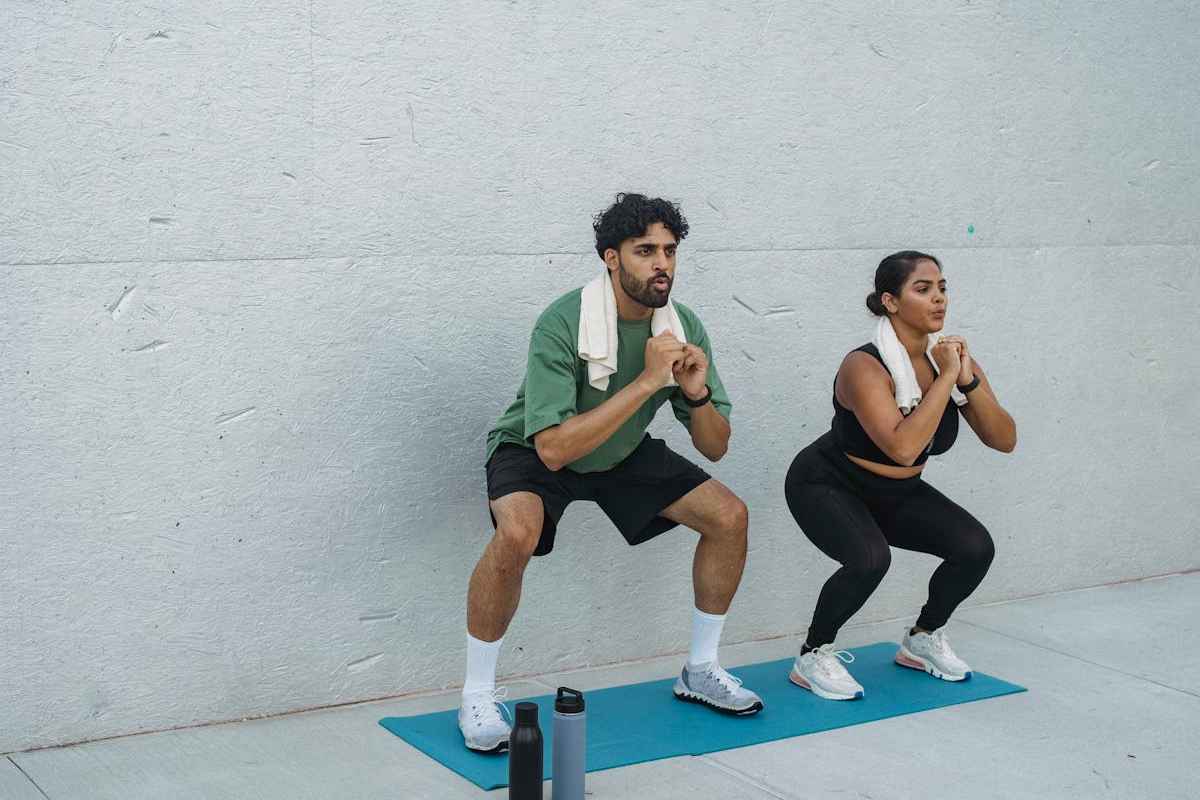Squats – The leg exercise is a classic – and considered obsolete. Wrongly. The problem is, most people do the squat completely wrong.
Table of Contents
How Do Squats Really Work?
The execution of the knee bends also called squats, is complex and not easy, especially for beginners. However, if you master the exercise, you train not only your leg, torso and back muscles but also mobility in your ankles, knees and hips.
You stand about shoulder-width apart in an upright position. The weight is on the heels (test: the toes can be moved)
Feet and knees on each side point in the same direction – no knock-knees.
The hands are stretched forward, and the gaze is directed ahead.
Then, squat down by pushing your buttocks back until it’s just a few inches off the floor.
Push yourself back up with strength from your heels. When doing this, it is important that you consciously tense the back extensors (hollow back) and that you do not lean forward too much. The goal is to squat really deep.
How Are You Not?
Beginners often make the mistake of wanting to do a lot of reps quickly without being able to squat at a moderate pace and with proper technique.
Contrary to the still prevailing opinion, the low position is not harmful to the knee. “The opposite is the case: the 90-degree squat is more stressful for the knee joint than the deep squat.
If the flexion is slowed down at a knee angle of 90 degrees, higher shear forces act on the joint than if the movement is continued into a squat,” says sports physician Kurt Moosburger recommended.
Tip: Practice the squat four to six inches in front of a wall. This will prevent you from bending your upper body too far forward. If necessary, you can also hold on to a waist-high object such as a chair. The knees should not be pushed beyond the tips of the toes, the lower legs should remain vertical.
What Good Are Squats Anyway?
Squats work the quadriceps, hamstrings, glutes, lower back, and hip flexors. Similar to push-ups or pull-ups, the squat strengthens several muscle groups in one movement.
These fitness exercises, known as muscle slings, are considered more effective than isolated strength exercises. Depending on the execution and intensity, the squats also strengthen the abdominal, back and calf muscles. Oh yes, of course, you also get a cracking butt.
What are the Variations?
There are countless variations of squats. Squats with the barbell on the shoulders are common for weightlifters. Advanced users can wear a heavy backpack or carry weights to make the exercise more difficult. Altered arm positions – arms up or behind the head – are also welcome variants.
Pistol squats are particularly impressive. In these single-leg squats, the exerciser extends one leg forward and squats deeply. Beginners can make do with sumo squats. In this variant, the legs are wide apart, the toes point outwards. It’s a little easier than the classic squat.
Who Does It
There is hardly a personal trainer who does not have the squat in his program. Celebrity coach David Kirsch makes Heidi Klum just as fit as fitness trainer Mark Lauren (“Fit without equipment”) makes soldiers in the US Army.
Bodybuilders and weightlifters put heavy weight plates on the bar and push their muscles to the limit. For runners, too, effective cooperation between the abs, buttocks and back extensor muscles is important for a powerful and efficient running style. “Running isn’t just about footwork, it’s also core work,”

